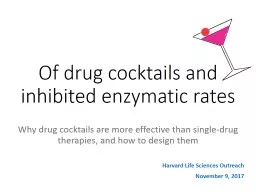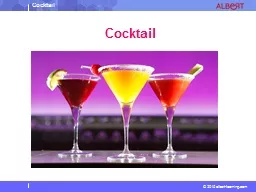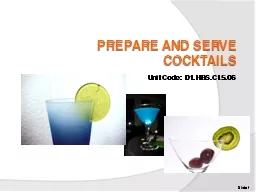PPT-Why drug cocktails are more effective than single-drug therapies, and how to design them
Author : lindy-dunigan | Published Date : 2018-09-29
Harvard Life Sciences Outreach November 9 2017 Of drug cocktails and inhibited enzymatic rates Learning goal and objectives Learning Goal To understand how structural
Presentation Embed Code
Download Presentation
Download Presentation The PPT/PDF document "Why drug cocktails are more effective th..." is the property of its rightful owner. Permission is granted to download and print the materials on this website for personal, non-commercial use only, and to display it on your personal computer provided you do not modify the materials and that you retain all copyright notices contained in the materials. By downloading content from our website, you accept the terms of this agreement.
Why drug cocktails are more effective than single-drug therapies, and how to design them: Transcript
Download Rules Of Document
"Why drug cocktails are more effective than single-drug therapies, and how to design them"The content belongs to its owner. You may download and print it for personal use, without modification, and keep all copyright notices. By downloading, you agree to these terms.
Related Documents














